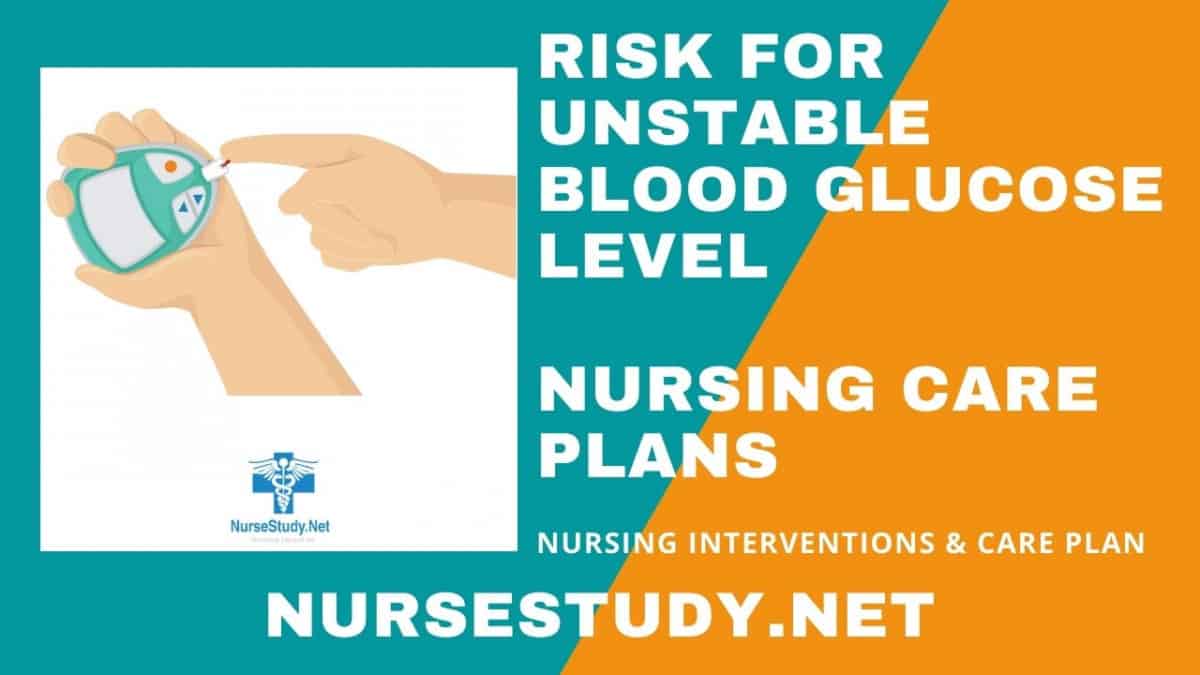Unstable blood glucose represents a fluctuation in blood sugar levels that can manifest as either hyperglycemia (high blood sugar) or hypoglycemia (low blood sugar). While commonly associated with diabetes, unstable blood glucose can affect both diabetic and non-diabetic patients due to various physiological and environmental factors.
Risk Factors
Several factors can contribute to unstable blood glucose levels:
- Insufficient knowledge about glucose management
- Medication non-compliance
- Poor dietary choices or irregular eating patterns
- Physical or emotional stress
- Concurrent illnesses or infections
- Hormonal changes (including pregnancy)
- Changes in physical activity levels
- Alcohol consumption
- Drug interactions
- Recent surgery or trauma
Clinical Manifestations
Patients may present with symptoms of either hyperglycemia or hypoglycemia:
Hyperglycemia Signs:
- Increased thirst and frequent urination
- Fatigue
- Blurred vision
- Headache
- Dry mouth
- Nausea
Hypoglycemia Signs:
- Trembling or shakiness
- Sweating
- Confusion
- Irritability
- Dizziness
- Hunger
- Rapid heartbeat
Nursing Assessment
Subjective Data Collection:
- Medical history
- Current medications
- Dietary patterns
- Exercise habits
- Stress levels
- Knowledge of glucose management
- Support system availability
Objective Data Collection:
- Blood glucose readings
- Hemoglobin A1C levels
- Vital signs
- Weight changes
- Skin integrity
- Neurological status
- Presence of ketones in urine
General Nursing Interventions
Regular Blood Glucose Monitoring
- Establish appropriate monitoring schedule
- Document trends and patterns
- Teach proper monitoring technique
Medication Management
- Ensure proper administration
- Monitor for side effects
- Verify medication compliance
Dietary Management
- Collaborate with dietitian
- Teach meal planning
- Explain carbohydrate counting
Activity Management
- Develop an appropriate exercise plan
- Monitor glucose before and after activity
- Teach activity modifications
Education
- Symptom recognition
- Emergency management
- Lifestyle modifications
- Self-care techniques
Nursing Care Plans
Nursing Care Plan 1
Nursing Diagnosis Statement:
Risk for Unstable Blood Glucose related to insufficient knowledge of diabetes management
Related Factors:
- Limited understanding of diabetes
- Poor self-monitoring skills
- Inadequate knowledge of medication management
Nursing Interventions and Rationales:
Assess current knowledge level
- Rationale: Establishes baseline for education planning
Provide comprehensive diabetes education
- Rationale: Increases self-management abilities
Demonstrate proper monitoring techniques
- Rationale: Ensures accurate glucose readings
Review medication administration
- Rationale: Promotes proper treatment adherence
Desired Outcomes:
- The patient will demonstrate proper glucose monitoring technique
- The patient will maintain blood glucose within the target range
- The patient will verbalize understanding of diabetes management
Nursing Care Plan 2
Nursing Diagnosis Statement:
Risk for Unstable Blood Glucose related to medication non-compliance
Related Factors:
- Financial constraints
- Complex medication regimen
- Side effects concerns
Nursing Interventions and Rationales:
Assess barriers to medication compliance
- Rationale: Identifies specific challenges
Connect with social services
- Rationale: Provides resource access
Simplify medication schedule
- Rationale: Improves adherence
Monitor glucose patterns
- Rationale: Evaluates treatment effectiveness
Desired Outcomes:
- The patient will maintain a consistent medication schedule
- The patient will utilize available resources
- The patient will demonstrate improved glucose control
Nursing Care Plan 3
Nursing Diagnosis Statement:
Risk for Unstable Blood Glucose related to dietary non-compliance
Related Factors:
- Poor nutritional knowledge
- Cultural dietary preferences
- Limited access to healthy foods
Nursing Interventions and Rationales:
Collaborate with dietitian
- Rationale: Ensures culturally appropriate meal planning
Teach carbohydrate counting
- Rationale: Improves dietary control
Develop realistic meal plans
- Rationale: Promotes adherence
Monitor weight trends
- Rationale: Evaluates dietary effectiveness
Desired Outcomes:
- The patient will follow the recommended meal plan
- The patient will demonstrate carbohydrate counting skills
- The patient will maintain a stable weight
Nursing Care Plan 4
Nursing Diagnosis Statement:
Risk for Unstable Blood Glucose related to stress and emotional factors
Related Factors:
- High stress levels
- Depression
- Anxiety about health condition
Nursing Interventions and Rationales:
Assess psychological status
- Rationale: Identifies emotional barriers
Teach stress management techniques
- Rationale: Provides coping strategies
Refer to mental health services
- Rationale: Ensures comprehensive support
Monitor stress-related glucose patterns
- Rationale: Establishes stress-glucose correlation
Desired Outcomes:
- The patient will utilize stress management techniques
- The patient will maintain stable glucose during stress
- The patient will demonstrate improved emotional coping
Nursing Care Plan 5
Nursing Diagnosis Statement:
Risk for Unstable Blood Glucose related to physical activity changes
Related Factors:
- Irregular exercise patterns
- Limited knowledge of activity effects
- Fear of hypoglycemia
Nursing Interventions and Rationales:
Develop an appropriate exercise plan
- Rationale: Ensures safe activity levels
Teach glucose monitoring around exercise
- Rationale: Prevents complications
Demonstrate proper snacking guidelines
- Rationale: Maintains glucose stability
Monitor exercise tolerance
- Rationale: Evaluates safety and effectiveness
Desired Outcomes:
- The patient will maintain safe glucose during activity
- The patient will demonstrate proper pre/post-exercise monitoring
- The patient will follow activity guidelines
References
- American Diabetes Association. (2023). Standards of Medical Care in Diabetes. Diabetes Care, 46(Supplement 1), S1-S2.
- Dunning, T. (2023). Care of People with Diabetes: A Manual of Nursing Practice. Wiley-Blackwell.
- Journal of Diabetes Nursing. (2023). Evidence-Based Management of Unstable Blood Glucose: A Systematic Review. Journal of Diabetes Nursing, 27(1), 1-10.
- International Journal of Nursing Studies. (2023). Nursing Interventions for Blood Glucose Management: A Meta-Analysis. International Journal of Nursing Studies, 110, 103854.
- Azami G, Soh KL, Sazlina SG, Salmiah MS, Aazami S, Mozafari M, Taghinejad H. Effect of a Nurse-Led Diabetes Self-Management Education Program on Glycosylated Hemoglobin among Adults with Type 2 Diabetes. J Diabetes Res. 2018 Jul 8;2018:4930157. https://pmc.ncbi.nlm.nih.gov/articles/PMC6129337/
- Journal of Clinical Nursing. (2023). Implementation of Evidence-Based Nursing Care Plans for Diabetes Management. Journal of Clinical Nursing, 32(15-16), 3421-3432.
